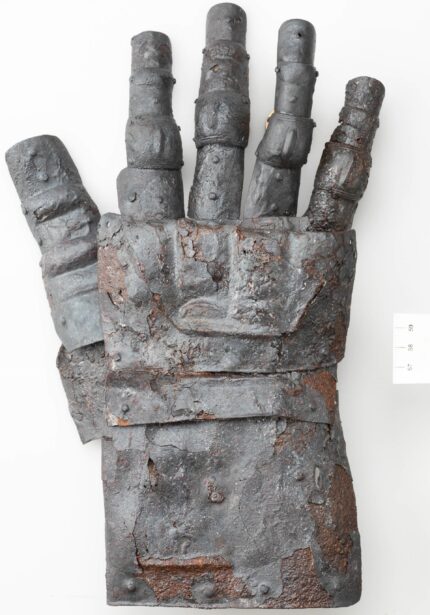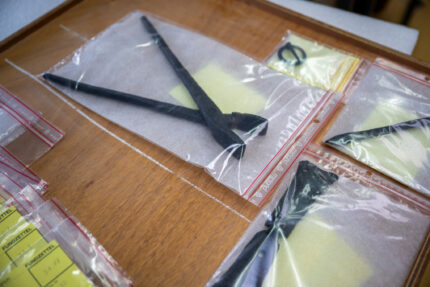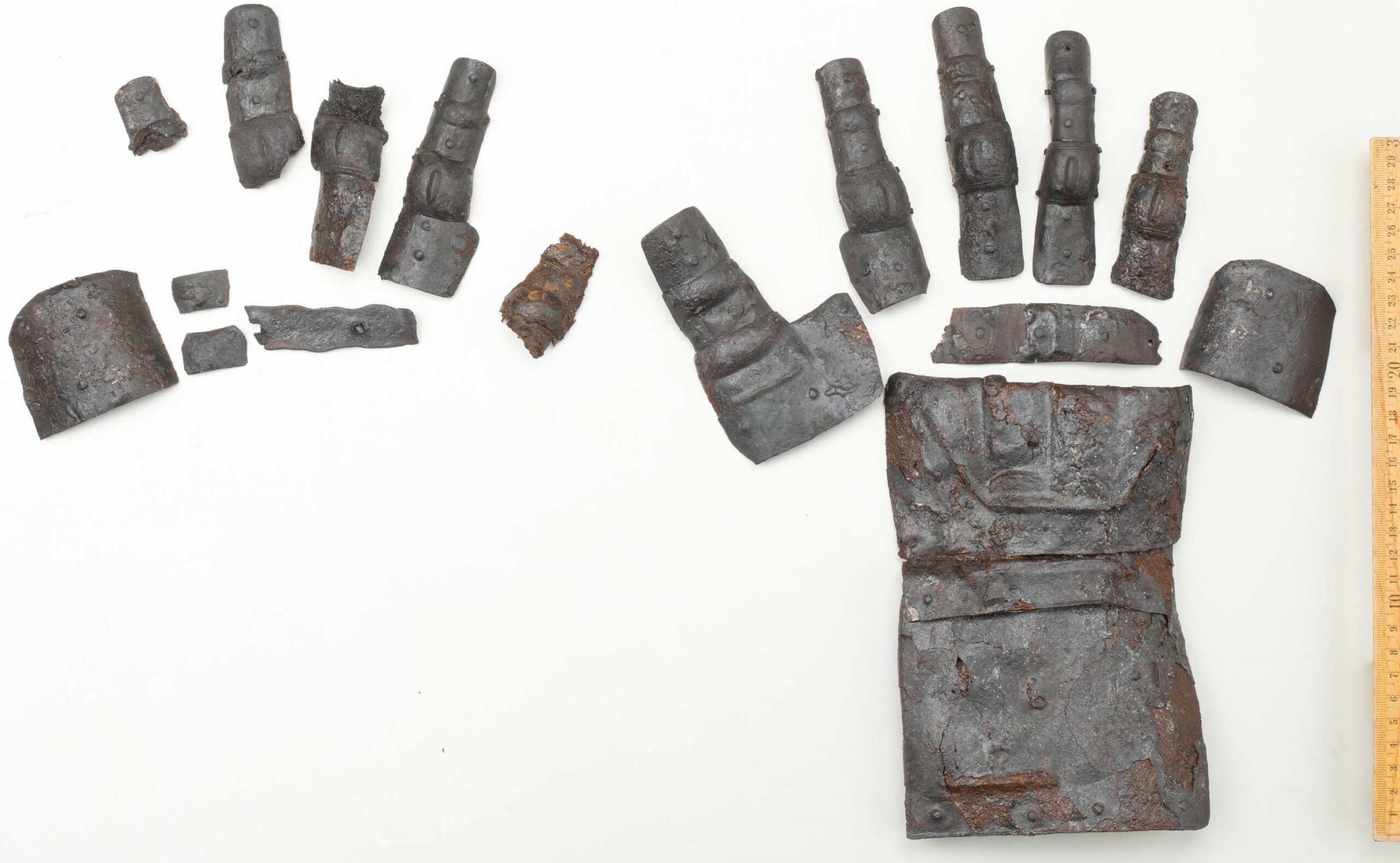 A complete iron armor gauntlet from the 14th century has been discovered at Kyburg Castle in the canton of Zürich, northeastern Switzerland. Most surviving armor gauntlets in armories, museums and private collections date to the 15th century at the earliest, usually later. Gauntlets from the 14th century are extremely rare, with only five other examples found in Switzerland. None of them are complete, and none of them are as detailed in design as this one.
A complete iron armor gauntlet from the 14th century has been discovered at Kyburg Castle in the canton of Zürich, northeastern Switzerland. Most surviving armor gauntlets in armories, museums and private collections date to the 15th century at the earliest, usually later. Gauntlets from the 14th century are extremely rare, with only five other examples found in Switzerland. None of them are complete, and none of them are as detailed in design as this one.
Cantonal archaeologists excavated a site southeast of the castle in the winter of 2021/22 in a rescue operation before construction of a home with a basement. The area is archaeologically significant because the outer bailey of the castle and its defensive walls used to extend over what is now the village of Kyburg. Artisan workshops and the homes of the castle’s servants were located in the outer bailey, so any planned construction there triggers an emergency archaeological investigation.
 The team unearthed a medieval weaving cellar which had contained three looms. The room had burned down in the 14th century, and the components of the gauntlet were found close together in the cellar. A forge from the same period was either above the weaving room or next to it. Evidence of forging work found in the excavation includes molds, a hammer, pliers and tweezers. Iron objects produced at the forge were also found, including keys, knives, hinges, pins, a writing stylus and a hand drill. It total, more than 50 metal objects were recovered from the forge. The components of two gauntlets, the right one complete, the left one fragmentary, were among them.
The team unearthed a medieval weaving cellar which had contained three looms. The room had burned down in the 14th century, and the components of the gauntlet were found close together in the cellar. A forge from the same period was either above the weaving room or next to it. Evidence of forging work found in the excavation includes molds, a hammer, pliers and tweezers. Iron objects produced at the forge were also found, including keys, knives, hinges, pins, a writing stylus and a hand drill. It total, more than 50 metal objects were recovered from the forge. The components of two gauntlets, the right one complete, the left one fragmentary, were among them.
The complete gauntlet is large, more than 14 inches long. It features individual iron plates that overlap each other like scales and are connected to each other with side rivets. Originally they would have been riveted to a leather or fabric material that would then be sewn onto a leather of textile glove. Thanks to the small plates and flexible underlayers, the wearer could comfortably grip a sword and even make a fist. The design type had remarkable longevity, remaining in use until the Thirty Years’ War (1618-1648).
The gauntlet is currently being kept in the cantonal archaeology offices in Dübendorf. It will go on display for three weeks only at the Kyburg Castle starting on European Heritage Day (September 7th). A 3D-printed replica will be on permanent exhibition at the castle from March 29th.

It may be a translation glitch but, as a blacksmith, I would call the tool illustrated “tongs” rather than “pliers.” The function is different rather than just a difference in terminology for the same tool. A pliers is used to increase your grip and or leverage, e.g. gripping a nut or bolt tighter so that you can remove it. A pair of tongs is used by a smith to hold hot metal so that the hand is not burned.
I would tend to agree. The bits beyond the rivet look better suited to handle flat stock and are the wrong shape even for medieval pliers. Should be somewhat more triangular and closer to the hinge and rivet for pliers. Makes me think of the Alexander Weygers illustrations of forging pliers (1974).
Weygers, A. (1974). The Modern Blacksmith. Van Nostrand Reinhold Co.
The problem is that pliers is derived from French, while tongs is derived from the Germanic languages, and both have historically been used to describe the same blacksmith tools. So what should we call a 14th century Swiss blacksmith’s tool?
“northeastern” rather than “notheastern” 😉
For those wondering what a 14th century top-notch setup would have looked like, check Wikimedia for “Cangrande I. della Scala”, who died in 1329AD in Northern Italy.
There is his equestrian statue with himself in full kit, and even his horse wearing some form of helmet 🐴️